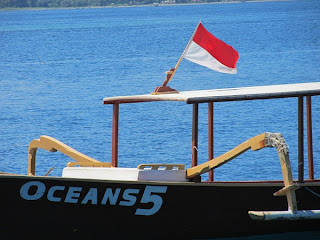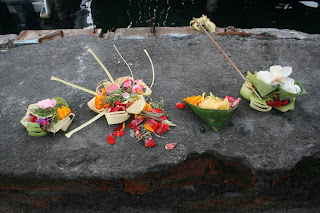
 07/02/13 to 10/02/13 – We left Darwin behind in the rear-view mirror and not far along the Stuart Highway we saw a sign that read ‘Alice Springs 1646’, which made us gulp. We took a left turn onto the Arnhem Highway, which leads all the way to Kakadu National Park and then on to Arnhem (Aboriginal land). We’d made it a hundred kilometres when we stopped at Foggs Dam. Everybody had said what a bumper year for crocs it was, and how we were bound to see some. We weren’t completely sure if we wanted to see any or not, but if we did, we wanted it to be at a safe distance. We drove a few miles down the gravel track, avoiding several wallabies hopping across our path, but no crocs in sight. Back to the highway where we camped just opposite a birdwatching site, called Window on the Wetlands. We’d found that meat was actually quite good value in Oz, and so we had our first proper steak since leaving home, prepared on our tiny gas stove. It was excellent, but the mosquitoes loved it as much as us, and came and surrounded us in our camper van.
07/02/13 to 10/02/13 – We left Darwin behind in the rear-view mirror and not far along the Stuart Highway we saw a sign that read ‘Alice Springs 1646’, which made us gulp. We took a left turn onto the Arnhem Highway, which leads all the way to Kakadu National Park and then on to Arnhem (Aboriginal land). We’d made it a hundred kilometres when we stopped at Foggs Dam. Everybody had said what a bumper year for crocs it was, and how we were bound to see some. We weren’t completely sure if we wanted to see any or not, but if we did, we wanted it to be at a safe distance. We drove a few miles down the gravel track, avoiding several wallabies hopping across our path, but no crocs in sight. Back to the highway where we camped just opposite a birdwatching site, called Window on the Wetlands. We’d found that meat was actually quite good value in Oz, and so we had our first proper steak since leaving home, prepared on our tiny gas stove. It was excellent, but the mosquitoes loved it as much as us, and came and surrounded us in our camper van.  We woke early as every morning (around 6am) when the temperature was “only” between 28 and 33 degrees. We continued along the highway before stopping for brunch (again, on the gas stove). We met a french bloke, Julien, who worked for Yamaha and as a perk was given a bike to test for free. He’d chosen to ride this around the world, and had ridden in Asia and Africa already (where he’d ridden in 57C heat), and was now doing Darwin to Adelaide, before going onto South America. We wondered how we would cope down in the Outback with temperatures near 50C (especially after struggling to sleep at 33ish the previous night). We hit the road again and after stopping a couple more times with vain attempts to spot some crocs, we ended up in the small uranium mining town of Jabiru, where there wasn’t much, but there was a supermarket with lovely cool air con. There was also a swimming pool, but this was closed until the following day for refurbishment. Instead we went to the lake for a barbeque dinner on the free gas barbeques in the park, before sleeping again under a magnificent starry sky.
We woke early as every morning (around 6am) when the temperature was “only” between 28 and 33 degrees. We continued along the highway before stopping for brunch (again, on the gas stove). We met a french bloke, Julien, who worked for Yamaha and as a perk was given a bike to test for free. He’d chosen to ride this around the world, and had ridden in Asia and Africa already (where he’d ridden in 57C heat), and was now doing Darwin to Adelaide, before going onto South America. We wondered how we would cope down in the Outback with temperatures near 50C (especially after struggling to sleep at 33ish the previous night). We hit the road again and after stopping a couple more times with vain attempts to spot some crocs, we ended up in the small uranium mining town of Jabiru, where there wasn’t much, but there was a supermarket with lovely cool air con. There was also a swimming pool, but this was closed until the following day for refurbishment. Instead we went to the lake for a barbeque dinner on the free gas barbeques in the park, before sleeping again under a magnificent starry sky.
The next morning we went to Ubirr (pronounced ‘ooh beer’, although ironically you can’t buy a beer for miles around as its prohibited on aboriginal land). Here there was a nice walk with a great view from the lookout across the floodplain. There were also lots of aboriginal rock paintings to see. We learnt about some of the main aboriginal characters from the time of creation or the ‘dreamtime’ as they call it. It was really hot walking around the rocks and through the dry grass and we were relieved to be back at Jabiru to have a dip in the pool (which was thankfully open this time). Again we made us of the free gas barbeque in the park and our attention turned to the sky and the lightning from a thunderstorm in the distance. After paying attention to the rock art earlier in the day, we knew this to be the work of Namarrgon the Lightning man. The rain finally came and cooled down the air.
We wanted to visit more places in Kakadu, but many were closed due to roads being flooded. Many of the swimming spots and waterholes were also closed due to the risk of ‘Salties’ (saltwater crocodiles) lurking beneath. We stopped once more at Nourlangie Rock to see some more aboriginal rock art before hitting the Kakadu highway west and then back up to Litchfield National Park. We stopped for the night in a campsite next to a racecourse at Batchelor along the way and the only neighbours we had were wallabies.
The first stop at Litchfield was to see some Magnetic and Cathedral Termite mounds. These were as big as 5 metres high, and are the largest non-human structures on earth. If you were a tiny termite looking up at these it would be like us looking up at the tallest buildings in the world (proportionately).
We continued through the park, but were again unable to swim at Wangi Falls, again due to crocs. We began a walk to the top of the falls to see the sunset. As we walked we heard a noise in the bushes. We looked at each other and thought Crocodile! Our hearts were beating quickly as we felt quite vulnerable on the narrow path surrounded by thick bush and we could hear more growling sounds and something moving in the bushes, but we couldn’t see it. We knelt to grab the biggest rock we could find around us as a potential weapon… then, finally we saw two huge boar standing there… and felt a bit silly to have been so scared but had a good laugh after all. We continued the walk (with a quicker pace than before, hearts still beating) to see a nice sunset at the top of the waterfall. We returned to the base and camped the night there before finally making our way south down the Stuart Highway towards Alice.













































